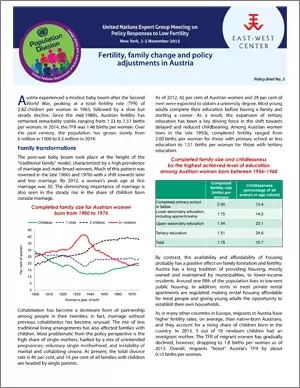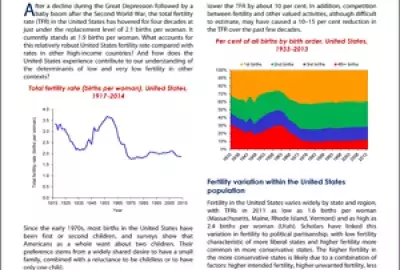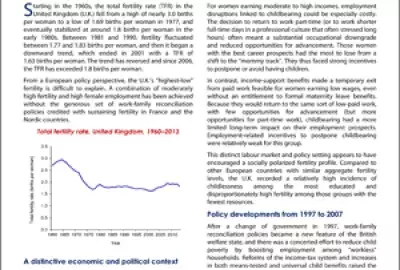Error message

Austria experienced a modest baby boom after the Second World War, peaking at a total fertility rate (TFR) of 2.82 children per woman in 1963, followed by a slow but steady decline. Since the mid-1980s, Austrian fertility has remained remarkably stable, ranging from 1.33 to 1.51 births per woman. In 2014, the TFR was 1.46 births per woman. Over the past century, the population has grown slowly from 6 million in 1900 to 8.5 million in 2014.
|
Austria experienced a modest baby boom after the Second World War, peaking at a total fertility rate (TFR) of 2.82 children per woman in 1963, followed by a slow but steady decline. Since the mid-1980s, Austrian fertility has remained remarkably stable, ranging from 1.33 to 1.51 births per woman. In 2014, the TFR was 1.46 births per woman. Over the past century, the population has grown slowly from 6 million in 1900 to 8.5 million in 2014.
|
Policy Briefs - United Nations Expert Group Meeting on Policy Responses to Low Fertility







